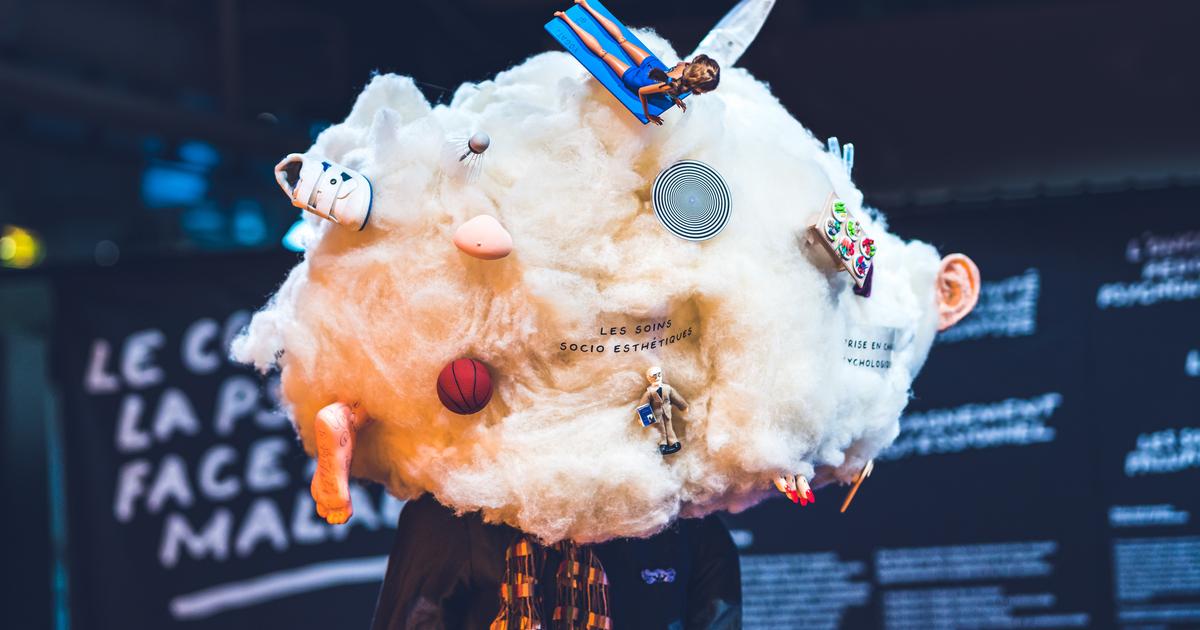LE FIGARO. - How did the Cité des Sciences come up with the idea of setting up an exhibition on cancer?
Laurence Caunezil. -
Today, in France, nearly 4 million people live or have lived the experience of this disease, which also involves their relatives.
And, for thirty years, the number of cases has continued to increase each year, around 382,000 new patients.
However, despite all these people concerned, cancer remains taboo in our society.
We still use this formula "
deceased from a long illness
" in the obituaries of personalities, rather than mentioning their cancer.
At the Cité des sciences, we have decided to take up this serious subject.
It is both scientific and societal, as well as intimate, because it sends us back to our finitude.
What are your goals ?
We want to show this cancer that many do not want to face: 600 m2 are devoted to the "
monster
to desacralize it and break taboos.
Our bias is audacious since we are betting that the public will abandon the posture of the ostrich and will come to seek information, that which interests them.
For this, we have put the patient and caregivers at the heart of our message.
But also scientists, since it is a question of showing the advances in cancer research.
For this, we relied on the expertise of the National Cancer Institute and that of many doctors and researchers.
It is necessary to explain what cancerization is and to inform about the treatments: the conventional ones - rays, chemo, surgery - and the new therapies - immunology, hormonology.
We will also go further in the explanations thanks to conferences around the exhibition.
For example, the one on CAR-T cells, weapons against tumours, led by Inserm researcher Karin Tarte, from the Rennes University Hospital.
Throughout the year, we have also planned mediations for teenagers.
Indeed, the exhibition is designed for a school public, at the entrance to third, class where we study the concept of cell.
Read alsoCancer: do not hesitate to consult a shrink
How to speak to the general public about this cancer which frightens so much?
We commissioned a study to find out what the public thought of the theme.
We were told that it was important to make an exhibition on cancer, that it was not normal not to talk about it.
But those we interviewed added that they would be afraid to come… We also know, since the disease is common, that each visitor would arrive with their anxieties, their grief.
So we had to find a way to make cancer lookable.
Very quickly, we decided to strongly structure the exhibition, both the topics covered and their scenarios.
And we have created a calm and soothing atmosphere to better convey the messages.
How does this translate for the visitor?
The scenographer Clara Bombled chose round shapes, a bit like cells, and soft colors.
The typography used for the inscriptions is of the handwritten type to bring the human.
It is important to be calm, to be able to take a breath, to collect oneself and to refocus.
This is why wandering is free: we have five audiovisual installations that you can explore at your leisure.
There is no device to manipulate, we do not play with cancer.
All in all, we wanted to put the visitor in a state of curiosity, to shift him towards his possible a priori vis-à-vis this anxiety-provoking subject.
When we enter the exhibition, we first discover a crab with a chosen aesthetic and a film which explains that cancer is 500 million years old, that
it is linked to the emergence of life on Earth.
The scientific explanation makes it possible to put fear at a distance, cancer becomes a common thing.
In the middle of the exhibition, a rotunda allows you to view a document on cancerization.
Visitors are seated on comfortable armchairs, the subject is complicated and it is necessary to be well settled.
As for the rooms devoted to the disease, to treatments, to research, these are spaces with very readable titles, but, to discover what is inside, you have to go inside and you never have to. .
Visitors are seated on comfortable armchairs, the subject is complicated and it is necessary to be well settled.
As for the rooms devoted to the disease, to treatments, to research, these are spaces with very readable titles, but, to discover what is inside, you have to go inside and you never have to. .
Visitors are seated on comfortable armchairs, the subject is complicated and it is necessary to be well settled.
As for the rooms devoted to the disease, to treatments, to research, these are spaces with very readable titles, but, to discover what is inside, you have to go inside and you never have to. .
We know that 40% of cancers can be avoided thanks to a lifestyle without tobacco, without too much alcohol, with a better diet
Laurence Caunezil
Not so easy to show the drama of cancer and the sometimes fatal outcome...
Indeed, we did not want to water down, but without falling into the trash with too harsh medical images.
We show a malignant melanoma, an operating theater with 10 caregivers who are leaning over a patient, but there is no question of showing the open breast, the gaze is imbued with modesty.
As for the place of death, it is underlying without being tackled frontally.
It shines through when a caregiver tells his patient that "
it's not good
".
It is there in the testimonies, we talk about end of life, palliative care… We have images of liver metastases, we see death and we see the monster.
What place have you given to prevention?
I must say that it was a part of the exhibition that was not easy to put together.
On the one hand, we know that 40% of cancers can be avoided thanks to a lifestyle without tobacco, without too much alcohol, with a better diet.
But we don't want to place the blame for the occurrence of cancer and the general rise in cases on individuals alone.
This is a disease rooted in social practices and which can evolve according to public policies: air pollution, the level of pesticides in the West Indies are examples.
In the space devoted to prevention, we show posters of campaigns against alcohol and tobacco, in France and abroad;
we show awareness clips;
we fight against infox with a sort of Morris column on which short texts tell the true and the false about food supplements, contagious cancer, 5G… Finally, we have not forgotten the world of work and its professional cancers .
The idea is to present a diversity of information and speeches so that the visitor becomes an actor of his health.
Just before leaving the show, he can take a short test to assess his risk factors;
and he can write a little note on the end panel where he is asked: "
information and speeches so that the visitor becomes an actor of his health.
Just before leaving the show, he can take a short test to assess his risk factors;
and he can write a little note on the end panel where he is asked: "
information and speeches so that the visitor becomes an actor of his health.
Just before leaving the show, he can take a short test to assess his risk factors;
and he can write a little note on the end panel where he is asked: "
And you?
What are you doing to fight cancer?
»














